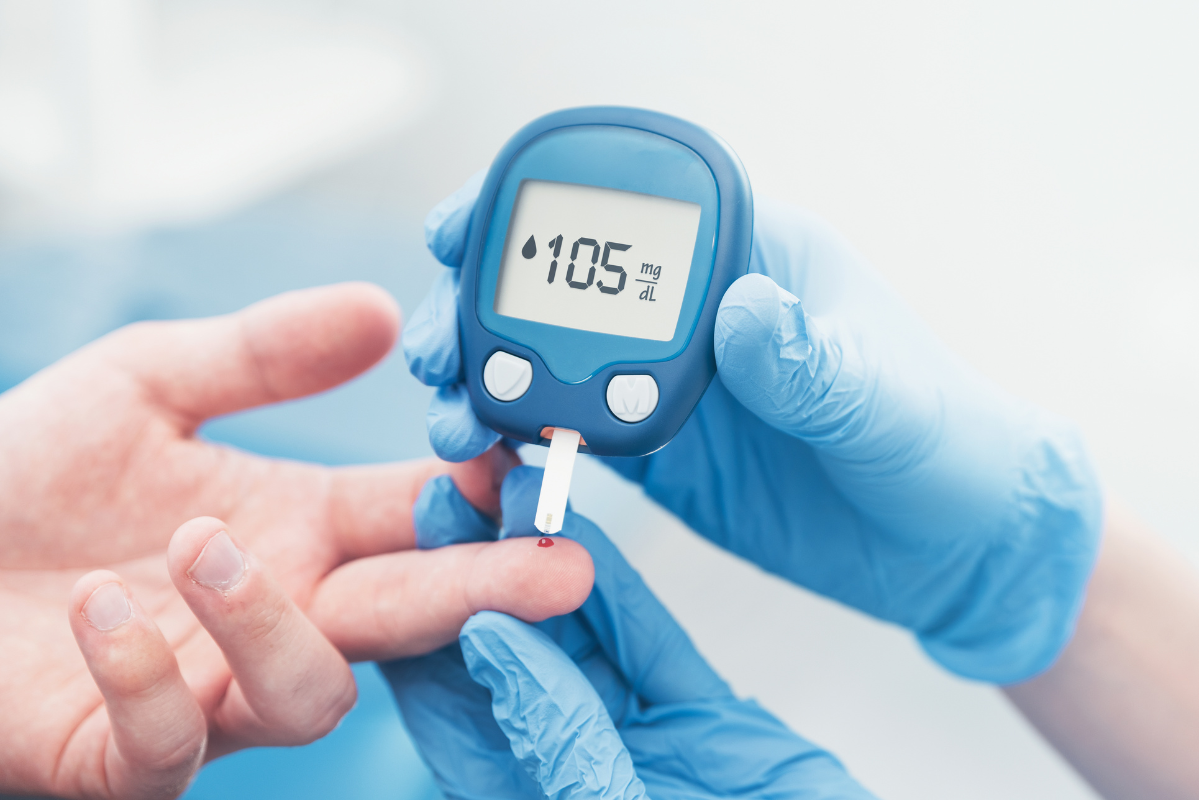Maybe you have family members who’ve struggled with it. Or you’ve reached an age where you’re starting to worry about your health or extra weight. You might be wondering if you’re experiencing Type 2 diabetes symptoms.
Type 2 diabetes is a common but serious condition that affects how the body processes glucose (also known as sugar). It usually doesn’t develop until people are in their 40s and 50s, so older adults must understand the risks.
Fortunately, if you know what to look for, you can catch it early, making it easier to manage and possibly even prevent or reverse it.
What Are Type 2 Diabetes Symptoms?
Type 2 diabetes often develops gradually, sometimes even almost silently. If you don’t know what the symptoms of Type 2 diabetes are, they can be easy to ignore.
Some of the most common Type 2 diabetes symptoms include:
- Increased thirst and frequent urination — High blood sugar levels pull fluid from your tissues, leaving you thirsty and causing you to urinate more often.
- Fatigue — Your body may struggle to use sugar for energy, leading to unusual tiredness.
- Blurred vision — High blood sugar can cause swelling in the lenses of your eyes, leading to vision issues that may seem like general aging.
- Slow-healing wounds or frequent infections — Diabetes can weaken your immune system and slow the healing process.
- Tingling or numbness in hands and feet — Nerve damage, known as neuropathy, can develop over time.
Again, these symptoms may develop slowly over time. They can also be easily ignored or assumed they’re just signs of aging.
However, you should always inform your healthcare provider about any changes to your body, regular routines, or energy levels. Early recognition of these symptoms is critical to preventing long-term health issues. If you experience these signs, schedule an appointment to discuss your symptoms when you first notice them.

The Importance of Regular Checkups and Blood Tests
One of the biggest challenges with Type 2 diabetes is that it can develop without noticeable symptoms. That’s why regular medical checkups and blood tests are so important, especially if you’re over 40 or have risk factors like obesity, pregnancy, or a family history of diabetes.
Routine screenings to check blood sugar levels are crucial for your health. They’re also easy to do and typically covered by insurance. (For uninsured people, we offer low-cost laboratory tests and cash-pay visits to ensure you get the care you need at a cost you can afford.)
These standard blood tests include:
- A1C Test — Also known as HbA1C or hemoglobin A1C test, this invaluable test measures your average blood sugar levels over the past 2-3 months. Not only do providers use this to diagnose diabetes, but they also need it to assess how well patients are managing their diabetes after diagnosis.
- Fasting Glucose Test — This assesses your blood sugar after not eating or drinking anything other than water (known as a fast) for 8-12 hours. Since you can’t eat or drink anything, most providers will try to schedule an appointment early in the morning. This test may be followed by a glucose tolerance test, especially if your provider knows you are at risk for diabetes.
- Glucose Tolerance Test — This evaluates how your body processes sugar over time. After receiving a fasting glucose test, you’ll need to drink a sugary drink. Then, after 1-3 hours, depending on the test, your provider will test your blood again to see how your body responds to sugar.
Even if you don’t know if you’re experiencing Type 2 diabetes symptoms, these tests can detect early signs of diabetes, prediabetes, or gestational diabetes. An early diagnosis gives you a chance to take action before the condition gets worse.

Diagnosing Type 2 Diabetes
Healthcare providers can diagnose Type 2 diabetes and prediabetes based on your potential Type 2 diabetes symptoms, health and family history, and blood tests.
A prediabetes diagnosis means your blood sugar levels are higher than usual but not yet in the diabetic range. This is a critical window where lifestyle changes can make a big difference.
Like with blood pressure (120/80) and heart rate (60-100 beats per minute), most non-diabetic people have an average blood glucose range. Results above those levels typically indicate you have diabetes or prediabetes.
A healthy A1C result for most people without diabetes is at or below 5.7%.
Fasting glucose levels are typically 99 mg/dL or lower. Results between 100-125 usually indicate prediabetes, and anything above 126 is often a clear sign of Type 2 diabetes.
A glucose tolerance test is considered normal at or below 140 mg/dL. A reading between 140 and 199 usually indicates a diagnosis of prediabetes, and anything above 200 often points to diabetes.
Other factors, including stress, an infection, and dehydration, can cause abnormally high levels of blood glucose, even if you don’t have diabetes or prediabetes. Because of this, your provider will schedule a second round of testing if your first results show high blood sugar before giving you a definitive diabetes diagnosis. Additional tests are even more important if you don’t have a family history or health risk of developing it or aren’t experiencing Type 2 diabetes symptoms.

Treatment Options for Type 2 Diabetes
Managing Type 2 diabetes often requires a combination of taking medication and making some lifestyle changes. While this can be challenging, adopting healthier habits will help you live a longer life with fewer health challenges down the road. Plus, you may even be able to eventually stop medication (also known as going into remission) and manage your diabetes through a balanced diet and exercise alone.
Managing Type 2 diabetes often includes:
- Diet — Focus on balanced meals with whole grains, lean proteins, healthy fats, and plenty of vegetables. Limit sugary and processed foods.
- Exercise — Regular physical activity, like walking or swimming, can help lower blood sugar and improve overall health.
- Weight Loss — Even losing a little weight can improve blood sugar control.
- Medications — Doctors may prescribe oral medications to help the body use insulin more effectively or lower blood sugar levels.
- Insulin Therapy — In some cases, subcutaneous insulin injections may be necessary to control blood sugar.
With the right treatment plan, many people can successfully manage their condition. Some may even achieve remission through sustained lifestyle and habit changes.

Preventing Type 2 Diabetes
If you think you’re experiencing Type 2 diabetes symptoms or you’ve been diagnosed with prediabetes, you can take steps to reduce your risk of developing full-blown diabetes.
Your healthcare provider can give you personalized advice based on your health, but general changes you can make include:
- Healthy Eating — Choose nutrient-dense foods and avoid sugary drinks and snacks.
- Physical Activity — Aim for at least 150 minutes of moderate exercise per week.
- Weight Management — Losing just 5-10% of your body weight can significantly lower your risk.
- Stress Reduction — Chronic stress can affect blood sugar levels, among many other things. Finding healthy ways to manage it, such as meditation, breathing exercises, or hobbies, can help improve your blood sugar and overall health.
- Regular Checkups — Monitor your blood sugar levels and consult your doctor regularly.
Even if you don’t have prediabetes, these strategies can help maintain your physical and mental health and reduce your risk of developing diabetes in the future.

Don’t Ignore Type 2 Diabetes Symptoms
Diabetes is a serious condition and something that you shouldn’t take lightly. However, it’s very manageable and, in many cases, preventable.
By recognizing Type 2 diabetes symptoms, scheduling regular checkups, and making healthier lifestyle choices, you can take control of your health and reduce your risk.
Don’t wait for symptoms to appear — talk to your healthcare provider today about getting screened. Remember, it’s never too late to take steps toward a longer, healthier future.






